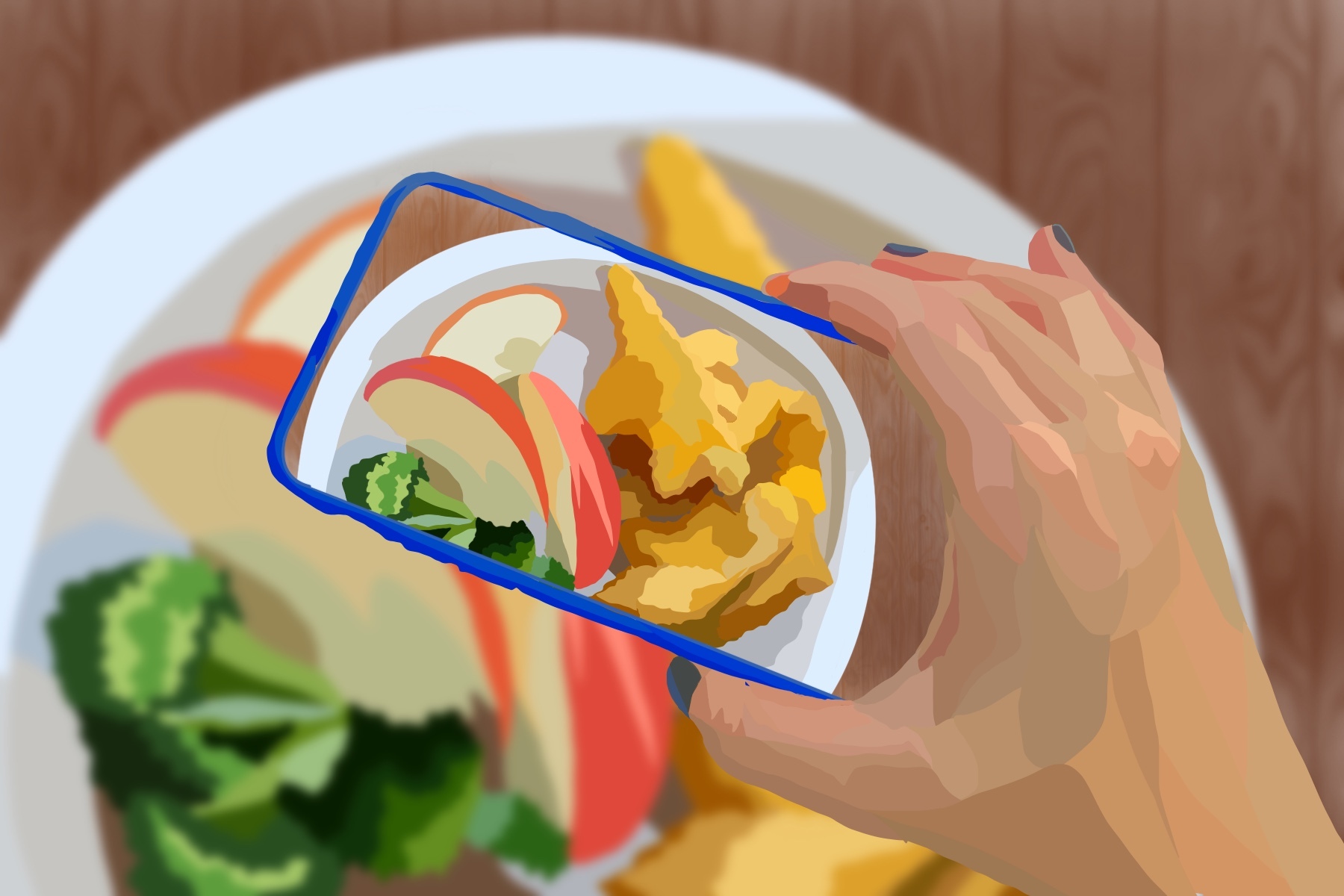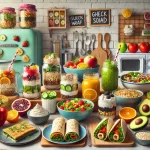The culinary community has long been entrenched in narratives of prestige. Touting a vernacular that eludes most home cooks, many find culinary circles guilty of “gatekeeping.” For years, home cooks have turned away from gourmet culinary culture, exasperated at its ostentatious performance. In much the same way as “regular” Americans avoid the uppity communities surrounding hobbies like fine wine tasting and museum curating, so too did they fastidiously avoid epicurean circles and their publications.
In recent years, however, the culinary community has shifted the dialogue. The death of the elitist food critic has brought joy back and opened people up to new forms of media and consumption — digital and otherwise. Non-foodie Americans no longer feel alienated, yielding a new culinary order that incorporates more diversity in ingredients, techniques and chefs themselves.
The spread of digital cooking media has undoubtedly accelerated this change. Recipes are more likely to travel through the internet, thanks to the popularity of cooking-and-news conglomerates like NYT Cooking, Epicurious and Bon Appétit. Featured columnists and personalities on each publication use personal social media platforms to supplement their recipe suggestions as well, incorporating features like Q&A sections on Instagram to answer common questions about their most famous recipes.
The NYT Cooking Instagram highlights chefs who “take over” their Instagram for the day. They’ll often answer fan questions and demonstrate easy recipe swaps for those with limited ingredient supplies. Bon Appétit has taken on new levels of popularity through digital media as well, producing popular YouTube series from their “BA Test Kitchen” featuring personalities like Claire Saffitz, Brad Leone and Sohla El-Waylly.
The Test Kitchen chefs blur the lines between accessible celebrities and gourmet experts — demonstrating their impressive techniques while still building a fan following that closely resembles fandoms for actors, pop stars and other icons. Home chefs can follow along with their favorite columnists like never before, watching YouTube videos to learn techniques for baking a cake and scrolling through Instagram for follow-along recipe tutorials.
By capturing the power of the media, the culinary community has carved out a new space for innovation, one where chefs know to avoid taking themselves too seriously and market to food-eaters, not food critics.
When the COVID-19 pandemic hit, few industries changed so drastically as the culinary trade. With restaurants closed and grocery stores turned into hotspots of transmission, cooking at home became at once a necessity and a struggle for millions who were caught off guard. Local grocery stores were some of the first places hit with pandemic-induced frenzy. Aisles once filled with paper towels, toilet paper and sanitizer took predictable hits, but so too did those filled with non-perishable foods and pantry staples.
These items were stockpiled like never before, even as others went without, creating an inequity in ingredient distribution that left many unable to properly feed themselves nourishing, well-balanced meals. And as restaurants closed down or shifted to take-out only, grocery stores and bodegas became double-edged swords with fewer options for cooking and a greater need for supplies.
The culinary community has answered this call creatively. Using digital means, food giants like NYT Cooking have established a firm place for the culinary community in a quarantined and strictly online world. With an emphasis on supporting local restaurants, culinary entrepreneurs recognized that recipes needed to shift to family-portioned, doable sources of inspiration. The recipes would also need a very forgiving base of ingredients, with equally flexible chefs willing to “bend the rules” to help first-time cooks (and those strapped for time and cash) succeed.
Cooking in the time of coronavirus must be easy, democratic, and cut out ingredients that require more than one quick trip to the market. In other words, a complete reversal of the culinary culture that dominated much of the late ‘90s and early 2000s.
In light of the pandemic, chefs and editors have emphasized accessibility, a wise choice for ensuring their popularity and readership during this time. This narrowed lens gives the culinary community a new degree of sustainability that will outlast the pandemic itself. New recipes highlight ways to keep meals easy, delicious and open ended. Whether home cooking is a new or old pastime, the culinary community invites us to join their democratic and plainly more enjoyable type of cooking in the coronavirus pandemic.
NYT Cooking has released a line of “pantry staple recipes,” highlighting the ways non-perishables can inspire invention and provide nourishment once mixed with other easy-to-find ingredients. This list features “Pantry Queen” Melissa Clark’s Tuna Gratin (a potato chip and tuna casserole) that she cooks in real time on YouTube, along with her husband and daughter. The video is short, sweet and to the point: Clark cooks with a level of casualness and “doability” that has been lost from culinary culture for some time, allowing every home cook following along (or simply searching for inspiration) to feel at home in her digital kitchen.
While many chefs have expanded into the space of weeknight, at-home cooking (think “Tiny Kitchen Queen” Alison Roman), others have taken the rising need for at-home recipes and adapted. Bon Appétit has also followed this blueprint, releasing their own “Cooking in the Coronavirus” newsletter and a YouTube series featuring the BA Test Kitchen Chefs cooking their regular meals and desserts in the comfort (and solitude) of their home kitchens.
Without their fancy appliances, specialized dehydrator and endless supply of top-of-the-line ingredients, the Test Kitchen chefs have given us their culinary-trained professionalism and experience in a home kitchen package. For supplies, ingredients and helping hands, the focus shifts to what the viewer has available, not what they can search for. Goodbye lemony-turmeric tea cake and braised short ribs. Hello tuna casserole, “dressed up” ramen and two-ingredient desserts.
The role of food in American society has taken on a unique significance in these odd, trying times. With the democratization of cooking knowledge in general, Americans have well-fleshed-out sources of information from which they can draw ideas for meals, which have rapidly become one of the few sources of normalcy in people’s day-to-day routines. Food serves a dual role as both a necessity and a hobby — a source of fuel, togetherness and much-needed comfort. The culinary community has answered this call, filling these roles with demonstrated flexibility that shows the ever-changing relevance of food media.
Food editors like Samin Nosrat, author of “Salt Fat Acid Heat” and NYT Cooking columnist, remind readers that food fosters human connection. For a family living together in quarantine — perhaps with new tensions brewing due to unexpected proximity — eating and cooking together can be a peace offering, a bonding activity or a defense against boredom. For those living alone or missing family, cooking together “digitally” on Zoom might be the best medicine anyone can offer. Unfussy, doable meals give immediate joy and a moment of respite — fuel for both the body and soul.
With this thesis in mind, Nosrat and the NYT Cooking team released a series of YouTube “follow along” videos with the very apt hashtag #TheBigLasagna. Following Nosrat in her home kitchen, the camera demonstrates a step-by-step tutorial for how to make a relatively forgiving lasagna recipe at home. The videos aim to make digitally sharing the meal with friends, family and others easy. The success of #TheBigLasagna among home cooks demonstrates, once again, the importance of the collective food experience even as social distancing guidelines remain in place.
If food is what brings us together in times of crisis, the culinary curators who dictate which recipes will join us in the kitchen had their work cut out for them. In the COVID-19 pandemic, the culinary community has exceeded all expectations. Pivoting entirely to digital content, chefs and editors across the country have met the challenge to develop types of cooking that are simultaneously accessible, creative and low-pressure.
Moreover, the culinary community has reaffirmed that cooking and eating food is ultimately an act of love, and one that should be as unfussy as possible. The departure from gourmet into “everyday” styles of cooking is an affirmation of this. It is no secret that food brings people together. In a crisis like this, we could all use a little more togetherness.
















